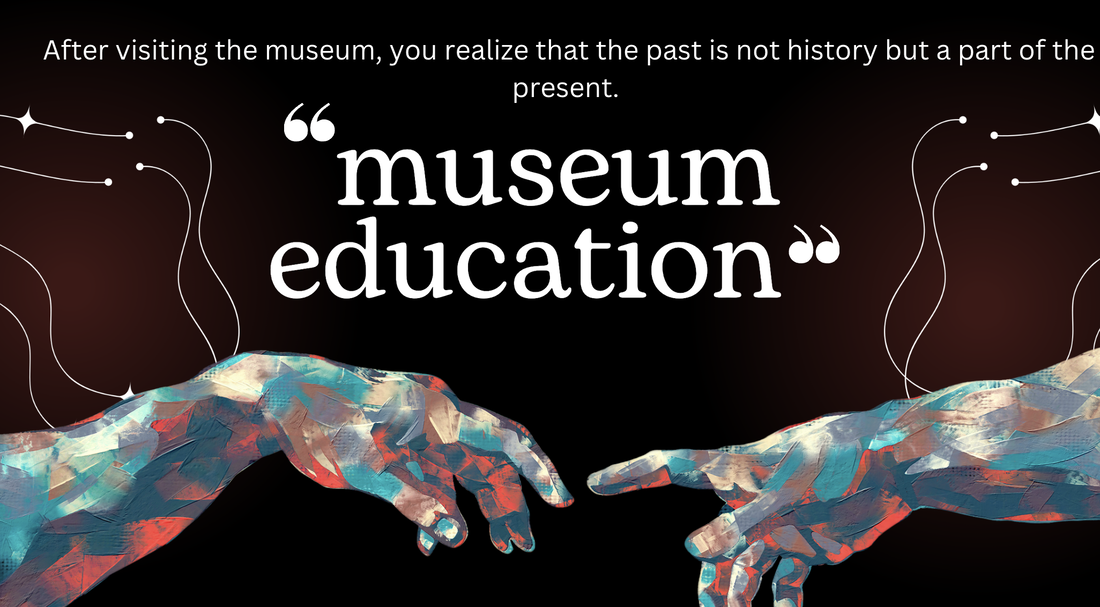Ways to get students involved in art1. The most effective way for students to participate in art is through a museum tour. But how likely are people who have visited the museum once to visit it again? Even in my experience, I don't think there are many unless you love the museum too much. Because of this, the biggest focus can be seen as how to provide the maximum effective experience in a one-time visit. With this in mind, as we read Chapter 3, Interrogating the Thematic Approach, argues, “if time permits, it is possible and productive to promote open and thematic dialogue about the same work, even within the same session.” In other words, rather than conveying tedious theories about chronology, geography, genre, art history, etc. to first-time visitors and lacking prior knowledge, it is to identify the reaction to the artwork based on the experiences that visitors bring to the museum and organize the program accordingly. An open dialogue begins with respect for the other person's experience and opinions. Through this chapter, I learned that calmly listening to each student's personal experience and background from the student's eye level and starting a respectful and open dialogue creates an atmosphere in which students can actively and authentically participate in the work of art for themselves. This may seem obvious, but as a practice that must be followed, it can be seen as a keyword that helps to interpret and analyze works in a more professional and detailed area by leading topical conversations in an open dialogue. 2. Then, I thought about what elements and aspects to focus on when students participate in the work through open dialogue. Chapter 4 (What Counts as a Theme In Art Museum Education), which I read about the topics of art and education that make this open dialogue possible, is well organized into four elements. In other words, the author, Olga Hubard, presented these three-dimensional themes by dividing them into literary meaning, musical meaning, modernism meaning, and aspects of the creative process. She writes, “The themes that museum educators choose inevitably shape the way individual museum objects come to life as audiences interact with them.” As suggested here, I think museum educators should be more aware of the importance of theme selection. In other words, in order to become a living, interactive museum education, it means that these themes for each subject must be well selected and educated. The more thoughtful we are in choosing our subjects, the more important our students' experiences with art will be. And Chapter 5 of Facilitating Interpretive Dialogues- Some Concrete Suggestions in the book that follows is helpful, with specific suggestions to help foster open conversations through thoughtful topics. I learned from this chapter, in particular, that it is very important to get to know the work first, and to do this, you must closely observe the work for a long time. You should also prepare open-ended questions and prompts in advance, and use conditional language when asking questions that invite interpretation or guesswork. When writing questions, it's also a good idea to anticipate how your audience will react. The most important thing is to listen. Listening “carefully” will be at the heart of the conversation facilitator's job. The way you listen communicates to your viewers that you care about what they have to say, and knowing this will encourage them to form and share ideas. The method of listening is also presented in detail. Allowing for silence, paying attention to body language, and so on. 3. Lastly, I thought about how students can more actively and voluntarily participate in art works through articles and videos. In particular, “Art Explainer 1: The Power to Look The Art Institute of Chicago” helped me redefine my philosophy of museum education and gave me ideas on how to engage students in a more interesting way. To appreciate an artist's work is to understand how we see it. It is true appreciation to understand the intention and meaning of the artist's work and reflect on the artist's view of us who understands it and the viewer's view of themselves through this understanding. In this sense, I was intrigued by the crown of the Yorba tribe in Africa. In other words, it is important to show a splendid and overwhelming appearance in terms of decoration and authority, but this tribal crown looks somehow familiar. Small birds are sitting huddled in a long conical shape. However, even in this, there are many incantations and symbolic meanings such as the will to rule the people well, the symbol of one's royal authority, and the barem for abundance. It is the same throughout the work. As an artist, when I draw, I also put my intentions in like a hidden QR code. The intention is like the crown of the Yorba tribe, in the hope that the viewer will be rich, happy, and comforted by escaping from the worries of the world for a while. Sometimes, like Cindy Sherman, she puts her own messages and philosophies into the paintings depending on the social and political situation at the time. They read these messages, look at them from their own experiences and perspectives, reinterpret them, and interact with the author. This is true museum education. In other words, it teaches you how to look at and reinterpret from your own experience and point of view, and interact with the author. Here, as in the two examples above, it is to teach each other how to discuss the intentions like QR codes hidden in the work and to get closer to the intention of the artist. To this end, I think it is the role of museum educators to provide information such as symbols, metaphors, historical backgrounds, and personal history that each QR code means by synthesizing questions leaked from open conversations.
0 Comments
Leave a Reply. |
Myungja Anna KohArtist Categories
All
Archives
July 2024
|
Proudly powered by Weebly


 RSS Feed
RSS Feed